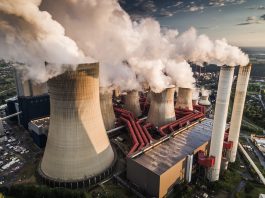New research from Cornell University and Rensselaer Polytechnic Institute shows that a continually warming world is leading to extended, late-summer weeks of water stratification in lakes, which prompts oxygen loss in the water.
Oxygen deprivation was found to be harmful in these conditions, leading to conditions called hypoxia (low oxygen) and anoxia (no oxygen). These conditions have extremely negative impacts on fish and other species.
“Lakes with dissolved oxygen loss strongly outnumber those with gains,” said lead author Stephen Jane, a postdoctoral fellow at the Cornell Atkinson Center for Sustainability.
“At large scales, aerobic organisms are losing available habitat as warming of lakes continues. This is particularly the case for organisms that rely on well-oxygenated cool waters deep in lakes to survive warm periods.”
The study, titled ‘Longer duration of seasonal stratification contributes to widespread increases in lake hypoxia and anoxia,’ was published in the journal Global Change Biology.
Assessing the fluctuating levels of oxygen in lakes
The team examined around 25 years of data available for more than 400 lakes – mostly within the United States – to identify dissolved oxygen loss. The main lake analysed during the study was Rondaxe Lake in Herkimer County, New York. Over the last 25 years, like thousands of lakes in temperate zones around the world, has been a victim of oxygen loss due to global warming.
In addition to Rondaxe, they also studied the Neversink and Cannonsville reservoirs, along with the Jockeybush and Sagamore lakes.
The researchers found that in temperate climate lakes, the amount of oxygen water is increasing by 0.9%-1.7% per decade on average. They also found that the volume of lake water suffering from oxygen loss has increased by more than 50% when compared to 30 years ago.
Oxygen loss in lake water can have many serious effects. For instance, anoxic portions of the water column can see a build-up of methane – a powerful and toxic greenhouse gas.
Nutrients, such as phosphate from agricultural fertiliser, are released from unsettled lake sediments and may enter the water column, which increases the likelihood of harmful algal blooms.
How stratification disrupts the natural oxygenation process
On a typical July or August day, a lake’s surface may be about 70 degrees, while the bottom may be around 40 degrees. “Water temperature and density are related,” Jane explained. “So it becomes a situation where basically you have oil and vinegar, where strong water temperature differences between layers causes resistance to mixing – which is known as stratification.”
The result of this process is that oxygen from the atmosphere is prevented from replenishing dissolved oxygen in deep waters, leading to oxygen loss. Because winter ends sooner than it did decades ago, seasonal stratification is starting earlier and ending later.
Jane commented: “These fluctuations in the stratification process lead to more time for deoxygenation – the interruption of the natural oxygenation process – for deep-water habits.”
Kevin Rose, Associate Professor at Rensselaer Polytechnic Institute and co-author of the study, concluded: “We show here, that as warming is continuing, the amount of time that lakes exhibit stratification is increasing and this leads to increases in the amount of low-oxygen water in lakes.
“The bad news is that given projected warming rates, we’ll likely see even greater increases in the amount of oxygen-depleted water in lakes in the future.”









